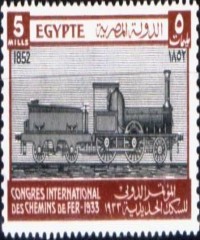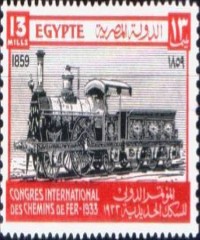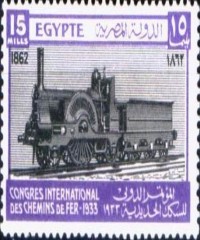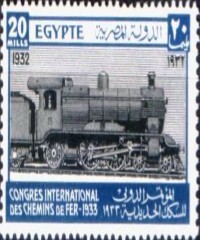A locomotive or engine is a rail transport vehicle that provides the motive power for a train. If a locomotive is capable of carrying a payload, it is usually rather referred to as multiple units, motor coaches, railcars or power cars; the use of these self-propelled vehicles is increasingly common for passenger trains, but rare for freight (see CargoSprinter)
Traditionally, locomotives pulled trains from the front. However, push-pull operation has become common, where the train may have a locomotive (or locomotives) at the front, at the rear, or at each end
Etymology
The word locomotive originates from the Latin loco – "from a place", ablative of locus, "place" + Medieval Latin motivus, "causing motion", and is a shortened form of the term locomotive engine which was first used in the early 19th century to distinguish between mobile and stationary steam engines
Use
The three main categories of locomotives are often subdivided in their usage in rail transport operations. There are passenger locomotives, freight locomotives and switcher (or shunting) locomotives. These categories determine the locomotive's combination of physical size, starting tractive effort and maximum permitted speed. Freight locomotives are normally designed to deliver high starting tractive effort—needed to start trains that may weigh as much as 15,000 long tons (16,800 short tons; 15,241 t)—and deliver sustained high power, at the sacrifice of maximum speed. Passenger locomotives develop less starting tractive effort but are able to operate at the high speeds demanded by passenger schedules. Mixed traffic locomotives (US English: general purpose or road switcher locomotives) are built to provide elements of both requirements. They do not develop as much starting tractive effort as a freight unit but are able to haul heavier trains than a passenger engine.
Most steam locomotives are reciprocating units, in which the pistons are coupled to the drivers (driving wheels) by means of connecting rods, with no intervening gearbox. Therefore, the combination of starting tractive effort and maximum speed is greatly influenced by the diameter of the drivers. Steam locomotives intended for freight service generally have relatively small diameter drivers, whereas passenger models have large diameter drivers (as large as 84 inches or 2,134 millimetres in some cases).
With diesel-electric and electric locomotives, the gear ratio between the traction motors and axles is what adapts the unit to freight or passenger service, although a passenger unit may include other features, such as head-end power (also referred to as hotel power or electric train supply) or a steam generator.
Some locomotives are designed specifically to work steep grade railways, and feature extensive additional braking mechanisms and sometimes rack and pinion. Steam locomotives built for steep rack and pinion railways frequently have the boiler tilted relative to the wheels, so that the boiler remains roughly level on steep grades.
Advantages
There are a few basic reasons to isolate locomotive train power, as compared to self-propelled vehicles
Ease
Whether out of necessity to replace the locomotive due to failure, or for reason of needing to maintain the power unit, it is relatively easy to replace the locomotive with another, while not removing the entire train from service.
Maximum utilization of power cars
Separate locomotives facilitate movement of costly motive power assets as needed; thereby avoiding the expense associated with tied up or idle power resources.
Flexibility
Large locomotives can substitute for small locomotives when more power is required, for example, where grades are steeper. As needed, a locomotive can be used for either freight duties, or passenger service.
Obsolescence cycles
Separating motive power from payload-hauling cars enables replacement of one without affecting the other. To illustrate, locomotives might become obsolete when their associated cars are not, and vice versa.
Safety
In an accident, the locomotive may act as a buffer zone to the rest of the train. Depending on the obstacle encountered on the rail line, the heavier mass of a locomotive is less likely to deviate from its normal course. In the event of fire, it might be safer, for example, with diesel locomotives.
Noise
A single source of tractive power (i.e., motors in one place), is quieter than multiple operational power units, where one or more motors are located under every carriage. The noise problem is particularly noticeable in diesel multiple units.
Saves time
The motive power accompanies the cars to be hauled and consequently there is a saving in time.
Maintenance
Especially for steam locomotives but also for other types, maintenance facilities can be very dirty environments and it is advantageous not to have to take passenger accommodation into the same depot. This was one reason for the demise of the GWR steam railmotors.
Disadvantages
There are several advantages of multiple unit (MU) trains compared to locomotives.
Energy efficiency
Multiple units are more energy efficient than locomotive-hauled trains and more nimble, especially on down grades, as much more of the train's weight (sometimes all of it) is placed on driven wheels, rather than suffering the dead weight of unpowered coaches.
No need to turn the locomotive
Many multiple units have cabs at both ends; therefore, the train may be reversed without uncoupling/re-coupling the locomotive, providing quicker turnaround times, reduced crew costs, and enhanced safety. In practice, the development of driving van trailers and cab cars has removed the need for locomotives to run-around, giving easy bi-directional operation and removing this MU advantage.
Reliability
Multiple unit trains have multiple engines, where the failure of one engine usually does not prevent the train from continuing on its journey. A locomotive drawn passenger train typically has only a single power unit; the failure of this single unit temporarily disables the train. However, as is often the case with locomotive hauled freight trains, some passenger trains utilize multiple locomotives, and are thus able to continue at reduced speed after the failure of one locomotive.








